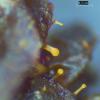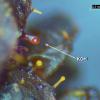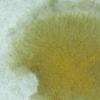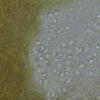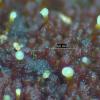
11-01-2026 20:35
Hello.A very tiny pyrenomycete sprouting sparsely

09-01-2026 17:41
Arnold BüschlenHallo, F. dilatata wird von vielen Bryoparasiten

10-01-2026 20:00
Tom SchrierHi all,We found picnidia on Protoparmeliopsis mur

07-01-2026 22:22
 Danny Newman
Danny Newman
Tatraea sp. on indet. hardwood The Swag, Great Sm

10-01-2026 01:18
 Danny Newman
Danny Newman
cf. Neovaginatispora fuckelii on indet. shrub Pre

07-01-2026 10:24
 Danny Newman
Danny Newman
Pezicula sp. on indet. hardwood Appalachian Highl

09-01-2026 10:08
 Blasco Rafael
Blasco Rafael
Hola, en el mismo habitat que la anteriorRetamaDia

08-01-2026 21:22
 Blasco Rafael
Blasco Rafael
Hola, He recogido esta muestra de Orbilia sobre Re

07-01-2026 17:29
 Marc Detollenaere
Marc Detollenaere
Dear Forum,On a barkless Populus I found some smal

10-11-2021 17:33
 Riet van Oosten
Riet van Oosten
Add-on topic http://www.ascofrance.com/forum/7059
Gliocladium like fungus
Eduard Osieck,
03-04-2020 14:56
A similar hyphomycete but taller (about 0,5 mm), heads whitish and similar conidia were found on an old basidiocarp of an hydnoid Corticiaceae (cf. Fibrodontia).
Could these concern a Gliocladium or Gliocladium-like species?
Thanks in advance for id help,
Eduard
Josep Torres,
03-04-2020 19:05
Re : Gliocladium like fungus
Hola Eduard
Si fuera mio, para empezar a buscar, lo haría por Stilbella.
Encontrarás información si buscas en el siguiente documento:
"A Monograph of Stilbella and some allied Hyphomycetes"
Saludos cordiales
Si fuera mio, para empezar a buscar, lo haría por Stilbella.
Encontrarás información si buscas en el siguiente documento:
"A Monograph of Stilbella and some allied Hyphomycetes"
Saludos cordiales
Eduard Osieck,
03-04-2020 22:15
Re : Gliocladium like fungus
Hi Josep
Thank you for your reaction. The publication concerned (Seifert 1985) lists 9 genera with species that show a positive KOH-reaction. Most of these genera, with the exception of Gliocladium, do not match with my collections (e.g. being non-synnematous). Unfortunately, none of the Gliocladium species described in this publication is fitting. The species concerned may have been described as “Gliocladium-like anamorph” (with the name of the teleomorph).
Cheers, Eduard
Thank you for your reaction. The publication concerned (Seifert 1985) lists 9 genera with species that show a positive KOH-reaction. Most of these genera, with the exception of Gliocladium, do not match with my collections (e.g. being non-synnematous). Unfortunately, none of the Gliocladium species described in this publication is fitting. The species concerned may have been described as “Gliocladium-like anamorph” (with the name of the teleomorph).
Cheers, Eduard
